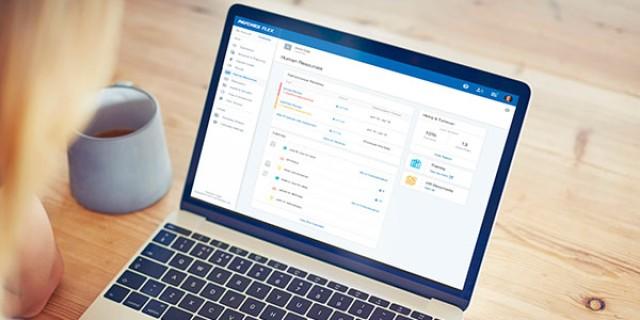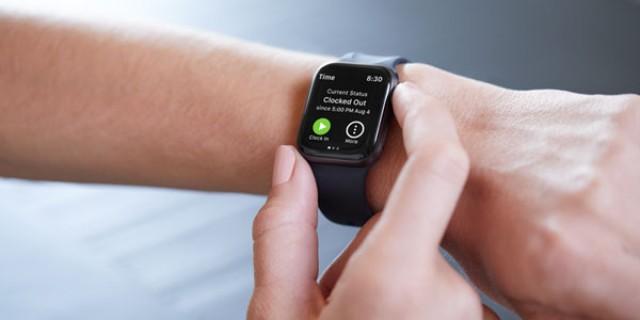- Employee Benefits
- Article
- 6 min. Read
- Last Updated: 07/24/2025
Micro-Retirements: What They Are and Why Employers Should Offer Them

Table of Contents
There's nothing small about micro-retirement, the latest workforce trend among Gen Z workers. Micro-retirements are the younger generation's answer to the job stress, burnout, and extended working years they see among older workers. But can this new approach really support work-life balance and wellbeing among employees? If it can, how can employers make it sustainable?
What Is a Micro-Retirement?
Micro-retirement is defined as taking an extended break for rest, travel, or personal development before returning to the workforce. More than a vacation, micro-retirement is a response to burnout that allows workers to step away and recharge. These breaks often last several weeks or more, making it possible to enjoy transformative life experiences and invest in mental health early rather than saving those goals for age 65 and beyond. Unlike other alternatives, individuals typically remain employed during a micro-retirement, with the intention of returning to the same role or employer.
Micro-Retirement vs. Sabbaticals vs. Career Breaks
Taking extended time off from work isn't a new concept. Sabbaticals and career breaks also give employees time to step away from the office. These breaks typically have a specific purpose, such as conducting research or learning a new skill. So how is micro-retirement different?
Let's look at some subtle nuances that define each scenario.
- Micro-Retirement: A break (typically several weeks to a few months) that's like a preview of retirement, focusing on personal fulfillment, travel, or passion projects. Micro-retirements typically focus on life experience and work-life balance rather than professional development. In this case, the individual usually remains employed and returns to the same job.
- Mini-Retirement: A longer break (typically several months to a year) which may include a career reset. Unlike a micro-retirement, an employee may leave their current employer, take a mini retirement, and start fresh at a new company when they return.
- Sabbaticals: A work-sponsored break (typically 6 months to a year) that is often tied to professional growth, research, or skill development. The focus is on coming back with new knowledge or expertise that benefits both the employee and employer.
- Career Breaks: Unpaid leave for personal reasons like family care, health issues, or major life transitions. These breaks typically focus on personal circumstances rather than professional or personal enrichment. An employer is not obligated to hold the role open, and an employee may have to find a new job upon returning to the workforce.
Although there is overlap in the way these terms are used, the main differences center on purpose: micro-retirements focus on well-being with the intention of returning to a current job, mini-retirements provide longer breaks from the workforce, sabbaticals support professional growth, and career breaks focus on handling personal needs.
Why Micro-Retirements Are Gaining Popularity
The way people think about work is changing. Non-linear career paths have become more common, with more than half of job seekers considering a change in industry or job function to add flexibility, fulfillment, or more time off. At the same time, remote work and flexible job roles have surged, and employee benefits trends increasingly emphasize well-being, total health, and flex work environments.
Alongside these changes, employee burnout, delayed retirement, and changing priorities have all contributed to shifting perspectives about retirement trends, including micro-retirement. Many of today's workers would rather take several micro-retirements during their working years to preserve work-life balance rather than follow a traditional career trajectory with permanent retirement at age 65 or older. For both employees and employers, the micro-retirement trend may serve to boost engagement and morale by giving workers fresh perspectives and an opportunity to develop new skills.
Why Employees Are Leveraging Micro-Retirements
As traditional retirement gets pushed further out and becomes more expensive, micro-retirement allows younger workers to get creative about when and how they take breaks from work. Here's what's driving this shift:
- Fighting Burnout: According to a Harris Poll survey, 43% of workers are burned out, and almost half of those don't want to talk to their boss about it. Micro-retirements give people a chance to reset and recover before they hit rock bottom.
- Prioritizing Personal Growth and Development: Today's employees care about more than climbing the corporate ladder. They want to travel, learn new skills, volunteer, or finally write that book. Micro-retirements let them do these things while they're still young and energetic —a trend particularly popular among Gen Z, who prioritize flexibility and mental well-being.
- A Moving Retirement Target: The cost of retirement has skyrocketed, and people are working longer to make up the difference. According to Pew Research, one in ten adults over 75 are still working, and nearly 20% of people aged 65 and older are still on the job instead of enjoying retirement. Younger workers would rather take micro- or mini retirements now than gamble on being able to retire comfortably later.
- Remote Work, Flexible Jobs: Changing workforce dynamics like remote work, freelancing, and flexible hours have made career breaks — including micro-retirement — more feasible.
Demographic Breakdown
Millennials and Gen Z think differently about work than their parents did. For these younger workers, work-life balance isn't a nice-to-have — it's essential. Micro-retirements can help them achieve that critical work-life balance.
- Gen Z: Mental health is a top priority for Gen Z and they value the ability to work from anywhere. Among Gen Z women, 74% say that watching their parents burn out has motivated them to find a better path forward. This generation of workers anticipates regularly redefining how they view work, and they're willing to step away to achieve the right balance.
- Millennials: For millennials, micro-retirements may serve as calculated investments in their future rather than spontaneous breaks. Caught between student loans, family responsibilities, and uncertain retirement prospects, they may take these breaks strategically to upskill, change career directions, or simply prevent burnout before it derails their long-term goals.
- Older Generations: Among older workers, taking full retirement is still the preferred norm. Older generations often view the micro-retirement trend with skepticism, preferring to step away from the workforce permanently once they reach retirement age. Still, that view may shift as workforce and economic changes impact the projected cost and age of retirement.
How To Structure a Micro-Retirement Policy
Adding micro-retirement to your benefits package takes thoughtful planning and clear guidelines. A well-structured policy may protect both your business and your employees by setting expectations upfront.
Eligibility Guidelines
To ensure fairness and business continuity, define standard criteria to determine who qualifies for micro-retirement. Consider the following:
- Years of Service: Require a minimum of 3-5 years of service to ensure employees have proven their value and commitment.
- Role Type: Factor in the nature of the role and its contribution to the business. Some positions may need different approval processes or timing restrictions.
- Manager Approval: Always require manager approval and HR sign-off to maintain proper oversight and planning.
Compensation Considerations
Decisions will need to be made on whether micro-retirements will be paid, unpaid, or partially subsidized. While most companies treat them as unpaid leave, offering partial pay or stipends can make the benefit more attractive and equitable —especially for employees who may not otherwise be able to afford extended time off.
In addition to pay, it's important to clarify how benefits like health insurance, retirement contributions, and paid time off will be handled during the leave. Clear communication around benefit continuation helps employees plan effectively and reduces confusion or dissatisfaction.
Planning a Leave Timeline
The key to a successful micro-retirement policy is giving everyone plenty of time to prepare. Encourage employees to provide 3-6 months advance notice so you can arrange proper coverage and knowledge transfer for the employees that may be taking on additional work, train temporary replacements, and document key processes. Planning in advance prevents last-minute scrambling and ensures nothing falls through the cracks.
Reboarding and Knowledge Transfer
Coming back from a micro-retirement shouldn't feel like starting over at a new company. For employers, it shouldn't feel like hiring a brand-new employee. To prevent this, set up a structured re-onboarding process that includes team briefings on what's changed while the employee was away. Include knowledge transfer sessions where returning employees have an opportunity to get caught up on new projects or processes and share insights from their time off. As returning employees settle back into daily work routines, consider assigning a buddy or mentor to help ease the transition.
Benefits of Supporting Micro-Retirements as an Employer
For employers, micro-retirements represent an opportunity to invest in your people and demonstrate that you value more than just their productivity. By offering the flexibility to take extended breaks for personal renewal, travel, or skill development, you can create positive workplace experiences that support engagement, satisfaction, and balance.
Here's why micro-retirement makes good business sense:
- Increased Employee Loyalty: Micro-retirement can be a worthwhile element of your retention strategy. Employees who feel supported in their personal and professional growth are more likely to remain committed to your organization long-term.
- Refreshed and Re-energized Workforce: After an extended break, employees often return with renewed perspective and motivation. This mental reset can support productivity, innovative thinking, and collaboration.
- Smoother Succession Planning: Micro-retirements provide natural opportunities to see how other team members handle bigger responsibilities. Asking high-potential team members to cover a role temporarily can show you where you have internal succession gaps and opportunities.
- Knowledge Retention and Transfer: Employees returning from a micro-retirement still have all their knowledge and experience intact. They often return with new perspectives that benefit everyone, and they can become valuable mentors for the next generation of leaders.
- Reduced Burnout and Turnover: Letting people take breaks before they burn out can help prevent stress-related turnover. Preventing these problems is much more effective than dealing with them after they happen.
Challenges of Micro-Retirements and How To Address Them
Micro-retirements are still relatively new to the business world, and employers may have legitimate concerns about how to implement them effectively. The good news is that these challenges are manageable with smart planning. Micro-retirements don't typically take place every year, which means employers can maintain stability in the workforce while still supporting the well-being of their teams.
Here are some common concerns about implementing workplace policies around micro-retirement:
- Knowledge Loss: The risk of losing critical knowledge when someone steps away is real, but it's also preventable. Create comprehensive documentation processes and knowledge-sharing sessions before the leave begins. Use this as an opportunity to cross-train team members and identify knowledge gaps that might already exist.
- Temporary Workforce Gaps: Covering someone's responsibilities for weeks or months can feel overwhelming, but it's not impossible. Start planning early by identifying internal candidates who can step up on a temporary basis or rotate responsibilities among team members. You might also use temporary contractors or outsource certain tasks to a specialized firm.
- Potential Non-Return: The nature of a micro-retirement means that some people might not come back. However, this risk exists with any employee at any time. The key is building strong relationships and a positive, supportive culture where employees want to work. When this is the case, employees often return refreshed and ready to pick up where they left off.
With the right planning and mindset, these challenges become manageable parts of a program that can ultimately strengthen your organization. Consider it a chance to make your team more resilient as a whole rather than overly dependent on any single person.
The Future of Micro-Retirement: Trend or Transformation?
Are micro-retirements here to stay? As younger generations increasingly prioritize work-life balance over traditional career ladders, it's likely that they will become more mainstream. Companies that pioneer these programs today aren't just offering a nice perk. They're building a blueprint for tomorrow's standard employment practices, investing in long-term engagement, and creating healthier workplaces.
How Paychex Helps Employers Support Micro-Retirements
Choosing the right employee benefits package supports your team and strengthens your business. Whether you're building a plan from scratch or refining what you already offer, Paychex is here to help.


Tags








